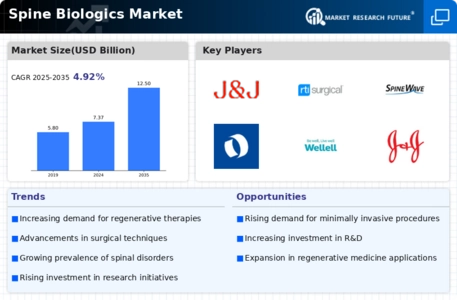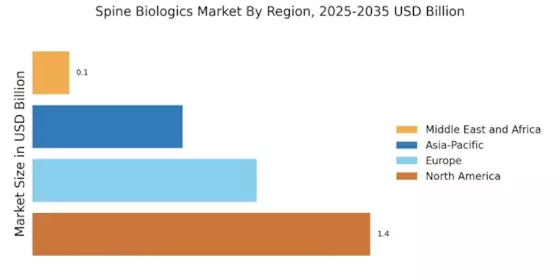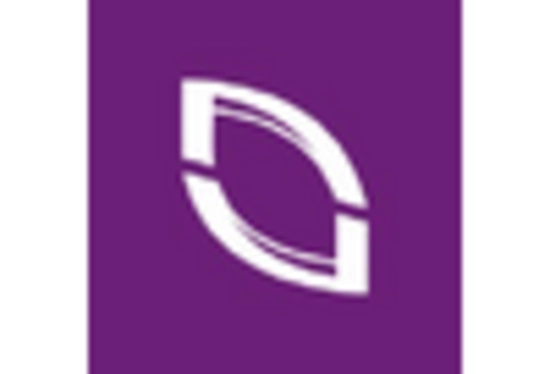Advancements in Biologic Therapies
The continuous evolution of biologic therapies is significantly influencing the Spine Biologics Market. Innovations in stem cell therapy, growth factors, and tissue engineering are paving the way for novel treatment modalities. These advancements not only enhance the efficacy of spinal surgeries but also reduce recovery times for patients. For instance, the application of mesenchymal stem cells in spinal fusion procedures has shown promising results, potentially improving fusion rates and patient outcomes. The Spine Biologics Market is expected to benefit from these technological breakthroughs, with an anticipated increase in the adoption of biologic products. This trend reflects a broader shift towards personalized medicine, where treatments are tailored to individual patient needs, thereby enhancing overall therapeutic effectiveness.
Increasing Prevalence of Spine Disorders
The rising incidence of spine disorders, including degenerative disc disease and spinal stenosis, is a primary driver of the Spine Biologics Market. As populations age, the demand for effective treatment options escalates. According to recent estimates, approximately 80% of individuals experience back pain at some point in their lives, leading to a surge in surgical interventions. This trend necessitates innovative biologic solutions that promote healing and recovery. The Spine Biologics Market is thus witnessing a robust growth trajectory, with projections indicating a compound annual growth rate of over 6% in the coming years. This increasing prevalence underscores the urgent need for advanced biologic therapies that can address the complexities of spine-related ailments.
Regulatory Support for Biologic Products
Regulatory frameworks supporting the development and approval of biologic products are fostering growth in the Spine Biologics Market. Agencies are increasingly recognizing the potential of biologics to address complex spine conditions, leading to streamlined approval processes. This regulatory support encourages innovation and expedites the introduction of new therapies into the market. For instance, the designation of certain biologic products as breakthrough therapies can significantly reduce the time to market, allowing patients to access advanced treatments sooner. As regulatory bodies continue to adapt to the evolving landscape of biologics, the Spine Biologics Market is likely to experience accelerated growth, driven by the introduction of novel therapies that meet stringent safety and efficacy standards.
Growing Investment in Research and Development
Investment in research and development within the field of spine biologics is a crucial driver for the Spine Biologics Market. Pharmaceutical companies and medical device manufacturers are increasingly allocating resources to develop innovative biologic solutions. This focus on R&D is essential for addressing the unmet needs in spine care, particularly in areas such as spinal fusion and regeneration. Recent reports indicate that R&D spending in the orthopedic sector is projected to reach several billion dollars annually, reflecting the industry's commitment to advancing treatment options. The Spine Biologics Market stands to gain from these investments, as new products and technologies emerge, potentially transforming the landscape of spine treatment and enhancing patient outcomes.
Rising Demand for Minimally Invasive Procedures
The growing preference for minimally invasive surgical techniques is reshaping the Spine Biologics Market. Patients increasingly seek procedures that offer reduced recovery times and lower complication rates. Minimally invasive spine surgeries, which often utilize biologic materials for enhanced healing, are gaining traction among healthcare providers. Data suggests that these procedures can lead to shorter hospital stays and quicker return to daily activities, making them appealing to both patients and surgeons. As a result, the Spine Biologics Market is likely to experience heightened demand for biologic products that complement these techniques. This shift towards less invasive options aligns with broader trends in healthcare, emphasizing patient-centered care and improved surgical outcomes.


















Leave a Comment